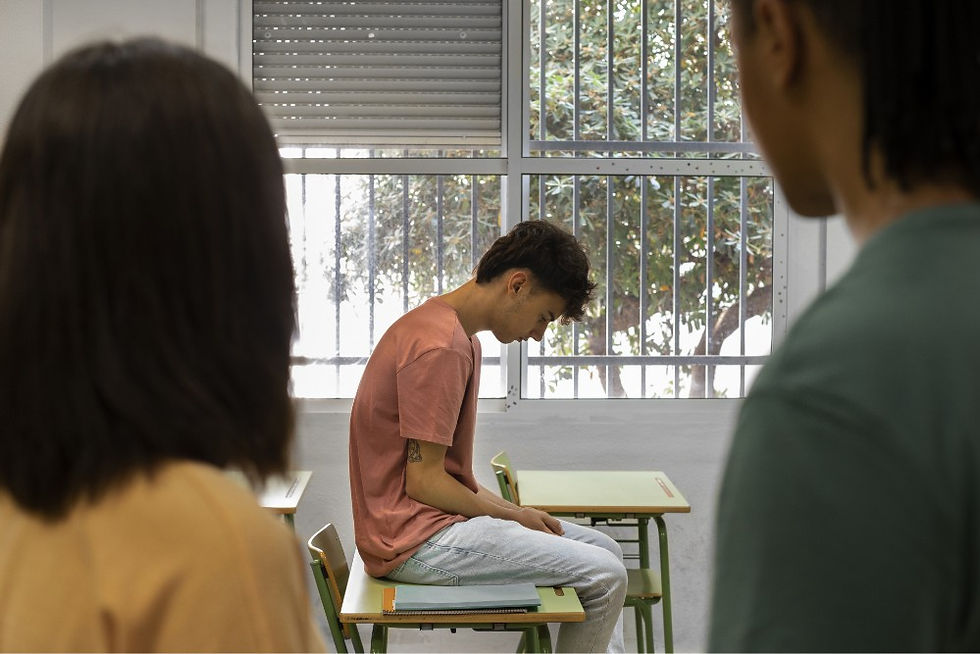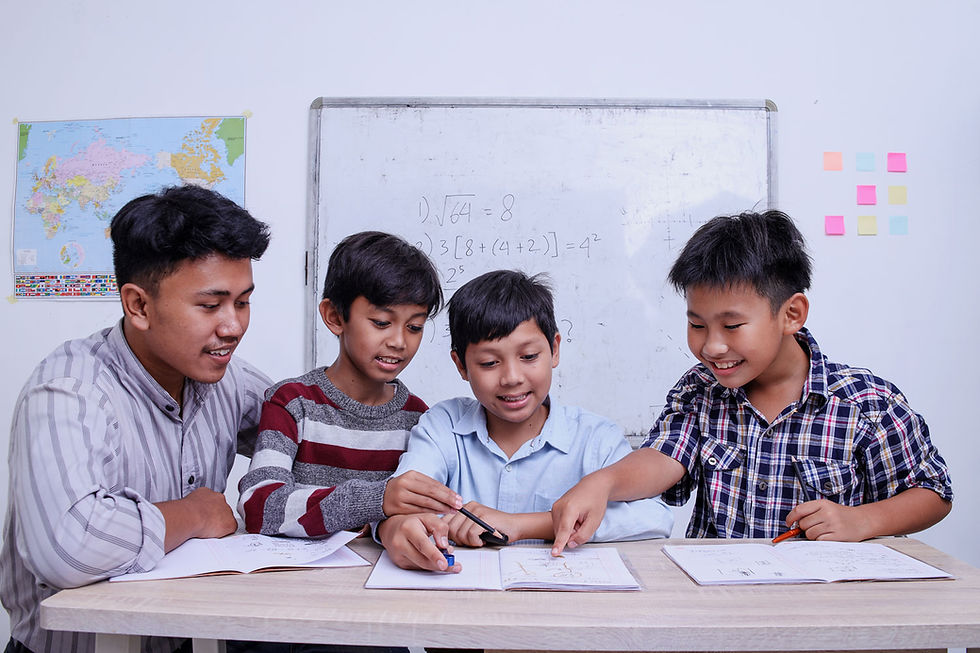Supporting Children with Dyslexia
- Everyday Heroes
- Sep 17
- 4 min read
Updated: Sep 23

Helping children with dyslexia requires more than just academic support. It calls for understanding, patience, and the right strategies. As such, early identification and proper intervention are key to ensuring that every child has the opportunity to thrive.
What is Dyslexia?
Dyslexia is a type of specific learning difficulty identifiable as a developmental difficulty of language learning and cognition. It primarily affects the skills involved in accurate and fluent word reading and spelling. Characteristic features of dyslexia are difficulties in phonological awareness, verbal memory and processing speed.
Co-occurring difficulties may be seen in aspects of language, motor coordination, mental calculation, concentration and personal organisation, but these are not, by themselves, markers of dyslexia.
How Do You Know the Child Has Dyslexia?
Dyslexia will look different on every child depending on their age, but common signs include:
Difficulty spelling simple words
Trouble learning and remembering letter names
Confusing letters with similar shapes (e.g., “d” and “b,” or “p” and “q”)
Struggling to rhyme words
Hesitation or reluctance to read aloud in class
Difficulty sounding out unfamiliar words
Problems connecting sounds to letters or letter combinations
Trouble blending sounds to form words
Reversing or mixing up the order of sounds in words

How Dyslexia Affects These Children
The Dyslexia Association of Singapore (DAS) estimates that dyslexia affects around 10% of the population. While it is primarily known as a learning difficulty, its impact often extends beyond academics into a child’s emotional and social well-being.
Experts highlight that children with dyslexia who struggle with word-finding difficulties often face challenges in expressive language, making it more difficult for them to articulate their thoughts clearly. This can lead to frustration, social withdrawal, and feelings of isolation, particularly in group settings where effective communication is crucial.
In addition, undiagnosed dyslexia can take a toll on a child’s self-esteem, as many begin to believe there is something wrong with them. This feeling is often worsened if they are wrongly accused of "not trying hard enough" to read or keep up in school. Over time, this lack of confidence may cause children to lose motivation and disengage from learning altogether, reinforcing a cycle of academic and emotional struggles.
Strategies on How to Teach Children with Dyslexia
Because dyslexia is a language-based learning disability, implementing appropriate teaching strategies and emotional support systems is crucial. Some of the ways to help young children with dyslexia include:
1. Use Multisensory Learning Techniques
Research has found that multisensory learning benefits children with dyslexia by engaging multiple senses—visual, auditory, and kinesthetic—at the same time. This approach creates a richer, more interactive learning experience that strengthens the brain’s ability to process and retain information.
By combining sight, sound, and movement, multisensory activities reinforce neural connections, making reading more accessible and less overwhelming for children with dyslexia. It has been shown to improve key literacy skills, such as decoding, recognising and manipulating sounds in words, fluency, and comprehension. Some examples of multisensory learning techniques include using flashcards, puppets, story videos, and real objects in the classroom.
2. Integrate Assistive Technology (AT)
For children with dyslexia, AT are tools that help in easing the demands of reading and writing, enabling them to learn and function independently. Through these tools, they can save time and overcome challenges such as note-taking, slow reading speed, and poor handwriting. This also allows them to demonstrate their abilities in ways that match their learning style. Some examples of AT include text-to-speech software, word prediction software, and optical character recognition, among others.
3. Provide Appropriate Accommodations
Classroom accommodations help create an inclusive and supportive learning environment for those with dyslexia. It's important to remember that these accommodations are not provided to give an unfair advantage. But rather, they level the playing field, allowing students with learning disabilities like dyslexia to demonstrate their true understanding without being limited by their challenges.
Examples of effective accommodations include:
Extended time on assignments and tests: Reduces stress and allows for careful reading and processing
Step-by-step written and verbal instructions: Helps students follow tasks without feeling overwhelmed
Alternative response options: Allowing oral answers instead of written ones when appropriate
Access to quiet workspaces: Minimises distractions and supports better focus
Exemption from reading aloud in class: Prevents anxiety and builds confidence
Provide clear, organized handouts: Use large, clear fonts (like Arial or Calibri) and ample spacing. Breaking up large blocks of text and using bold headings can make materials less overwhelming
By implementing these accommodations, educators can help students stay engaged, reduce frustration, and experience success in their learning journey.
Empowering Children with Dyslexia to Succeed
Supporting children with dyslexia goes beyond academics. It also requires emotional reassurance and confidence-building. They need to understand that their learning differences do not limit their potential. Parents and educators can help them understand this by celebrating progress instead of perfection, promoting a growth mindset, and reminding them that skills improve with consistent effort and practice.
At SHINE Children and Youth Services, we offer comprehensive support for children and youth with learning challenges, including dyslexia. Our youth and kids charity offers services that include school social work programmes, where we collaborate with schools and community partners to create a supportive learning environment. We also offer mental health services for youth, including psychoeducation and mental health screenings, as well as children and youth counselling services, peer support networks, and interest-based activities under the youth mental health programmes. Additionally, we collaborate closely with caregivers, providing them with resources and strategies to enhance their support for their children’s learning and emotional well-being.
By partnering with schools, families, and the community, SHINE empowers children to overcome challenges, build resilience, and unlock their full potential. For more insights into helping children with learning disabilities, check out our guide on how to detect learning disabilities and how to teach children with learning disabilities.




Comments